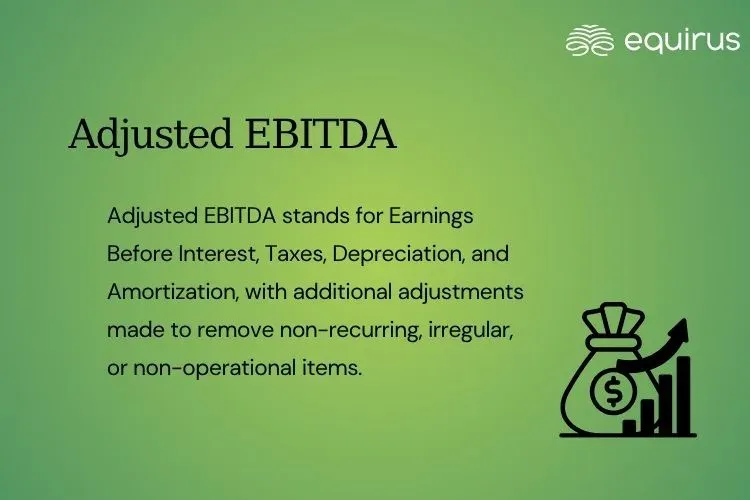Adjusted EBITDA

Key Highlights
-
Adjusted EBITDA stands for Earnings Before Interest, Taxes, Depreciation, and Amortization, with additional adjustments made to remove non-recurring, irregular, or non-operational items.
-
Adjusted EBITDA = EBITDA + Adjustments
What is Adjusted EBITDA?
Adjusted EBITDA stands for Earnings Before Interest, Taxes, Depreciation, and Amortization, with additional adjustments made to remove non-recurring, irregular, or non-operational items. It gives a clearer picture of a company’s core operating performance.
Purpose
The purpose of Adjusted EBITDA is to:
-
Show a normalized view of profitability
-
Help investors and analysts compare businesses across sectors and time periods
-
Exclude one-off events that don’t reflect day-to-day operations
Formula
Adjusted EBITDA = EBITDA + Adjustments
Common Adjustments Include:
- One-time legal expenses
- Restructuring costs
- Acquisition-related costs
- Asset write-downs
- Share-based compensation
- Gains or losses on foreign exchange or asset sales
Why It Matters?
-
Used by private equity firms, banks, and investors to assess the real earning power of a business
-
Helps with business valuations, especially during mergers or fundraising
-
Offers more consistency when comparing companies with different accounting policies or capital structures
Importance in Financial Analysis
-
Filters out noise and focuses on operational strength
-
Helps value companies fairly (especially in M&A deals)
-
Useful for covenant compliance in debt agreements
Limitations
-
Can be manipulated with too many adjustments
-
Not a standard metric under GAAP or IFRS
-
May overstate profitability if not disclosed transparently
Example
A company reports ₹100 crore in EBITDA but spent ₹5 crore on a one-time restructuring. The Adjusted EBITDA would be ₹105 crore, showing its earning potential without that unusual expense.
